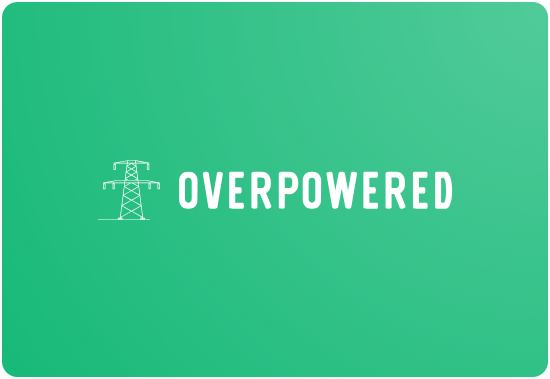Overpowered: Connecting Energy to the Grid, Faster
- Problem & Motivation
The power grid is big and complicated, so it’s no surprise that the process of adding new power generators to the grid is too. In order to connect a generator to the grid, developers have to submit an application to the grid operator’s Interconnection Queue. The Queue is notoriously slow (>5 years in average) and often ends with developers dropping out.
As we move towards a better, greener grid, we need an improved application process. That’s where Overpowered’s interactive tool comes in. By recommending groups of applicants to be studied together and providing visibility into the results, we can speed up processing, encourage sharing infrastructure costs, and reduce failed applications.
- Data Source & Data Science Approach
The data sources used in this study are listed below.
- CAISO’s Interconnection Queue - (ISO Generator Interconnection Queue) https://www.caiso.com/planning/Pages/GeneratorInterconnection/Default.a…
- CAISO’s 10 Year Transmission Plan - https://drive.google.com/file/d/1ddRU7lbQkXdpaz0cn20hKhq5JhdpWHAw/view
- California Substation GIS - From the California Energy Commission available upon request
- California Transmission Line GIS - https://gis.data.ca.gov/datasets/260b4513acdb4a3a8e4d64e69fc84fee/explo…
- California Power Plants GIS - https://gis.data.ca.gov/datasets/4a702cd67be24ae7ab8173423a768e1b_0/exp…
- County Population Centroids - https://www.census.gov/geographies/reference-files/time-series/geo/cent…
- Powerflow simulation software used by ISOs
Studying a single application at a time makes for a slow going. Overpowered’s clustering tool helps determine which projects make sense to study together. Overpowered provides a structured scoring mechanism to determine the best groups of applicants to study together. We also recognize that expert energy users have insights into how Queue applications are successful in their unique operating regions. Users can start with the default equal split, or configure the weighting parameters as they see fit.
- Evaluation
Our ultimate goal is to improve queue efficiency. We want to measure:
- Cluster strength
- How compatible are the projects within a cluster?
- How likely is the cluster to be approved?
- Improved wait times
- Are we speeding up the queue?
- Expert energy user feedback
- Key Learnings & Impact
In this capstone project, we break down a complex problem. Here is our key learnings.
- Technical Challenges
- Piecing together various data sources of different types
- Calculating unknown variables such as transmission line capacity and usage load
- Human-Centric Challenges
- Abstracting technical and human-centric process considerations
- How to allow tool flexibility in an inexact problem-space
- Machine learning expertise in an antiquated system
We expect that this overpowered tool could significantly reduce the queue wait time and dropout rates, and save time and resources.
- Acknowledgements
We would like to thank Damian Berger (SME at Atwell Group), Annie Polakowski (SME at Atwell Group), Dr. Roy McCann (Principal Investigator at GRAPES), Thomas Dempsey (SME at MYNO Carbon), CAISO Customer Support, UC Berkeley MIDS Capstone class and professors.











